X Factor Technology Articles
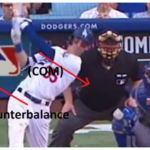
How to Prevent Flying Open or Over Rotation in baseball and Softball Swings Without Special Drills
Over rotating or flying open in baseball and softball bat swings. There is a lot of discussion about over rotating the hips, chest and shoulders during bat swings. Over rotation of the hips or “flying open” negatively affects swing direction, so there are a lot of drills designed to prevent this. Rather than going over the many drills and theories of how to prevent this from occurring, instead I will explain….
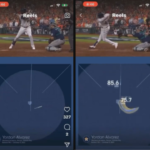
The Myth of the Pendulum: Insights into Barrel Acceleration in Baseball Swings
Barrel Acceleration: In this series of frames, we can observe the acceleration of Yordan Alveraz’s swing along three common points of contact: Outside, middle, and inside. To qualitatively assess the rate of barrel acceleration, we must first establish a fixed point from which to measure from. That point is the front edge of home plate, in this scenario.

Part 1: Vision Strategies for Baseball/Softball Batters
In the early to mid-2000’s, I was training the son of Seattle Mariners vision specialist, Dr. Doug Nikaitani. In exchange for batting lessons for his son, Dr. Nikaitani trained me on vision strategies and a condensed education on vision. One of the techniques he taught me, and that I recommend is peripheral gaze strategy, a form of soft focus or “open focus,” which is sometimes also referred to as global visual attention.

Part 2: Seeing Beyond Mechanics: Vision Insights
My training with Dr. Nikaitani not only helped me learn about vision strategies but also taught me to recognize signs of vision deficiencies that can inhibit batters. This was something I had great interest in and had invested a lot of time and research on, already. These issues sometimes manifest themselves physically. Instead of taking a mechanics-first approach like most coaches, I learned to see these mechanical quirks as sometimes indicative of potential vision matters.

Part 3: Exploring Vision Struggles in Baseball
In 2003, while working with a Tampa Bay Rays hitter whom I had been coaching since 1998, I had developed an intimate understanding of his swing. Through an examination of game video he sent me, I noticed that he was struggling to judge pitches effectively. My notes indicated that he seemed to see the ball well out of the pitcher’s hand, with perfect timing in his preparation, but it seemed to me he was losing sight of the ball as it approached him.
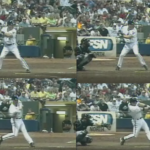
Revisiting Jeff Cirillo's Hitting Mechanics: A Journey from Slump to Resurgence
In the fall of 2004, I was searching for my next career advancing opportunity after having created a prospect for the Ray’s out of a player I’d discovered and developed, Matt Fields. It arrived in the form of then ex-Major Leaguer, Jeff Cirillo.
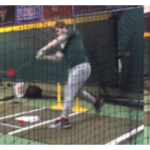
The Benefits and Implementation of Cue-Based Errorless Training
Batting practice in baseball serves a critical role in the development and refinement of a player’s ability to time a swing to hit a pitched ball. This practice, whether conducted with live pitchers or pitching machines, is rooted in the cognitive process of perception and action coupling, and encoding memory, whereby the batter develops references for future swing decisions.

How a Commonly Used “Classical” Swing Timing Cue Was Perfected and Modernized Through Technology, But Still Eludes MLB organizations’ Belief Systems
Cito Gaston, hitting coach Gene Tenace, and first base coach Dwayne Murphy, had been working with Bautista all season to improve his timing at the plate after noticing that he was consistently late, especially against good velocity.
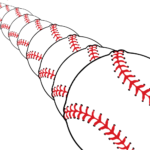
Exploring Bat Speed’s Purported Link with Contact Rates
To reverse engineer the proposition that heightened bat speed contributes to improved bat-to-ball contact rates, requires investigating the intricacies of this relationship. The systematic approach to data collection demands meticulous attention to detail.
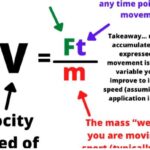
An Unbiased Evaluation of Arguments Relating to Claims Increased Bat Speed Results in Increased Bat to Ball Hit Rates
Every paper I write in the AI era, is run through an AI program. I use AI to check facts, grammar and to provide an objective evaluation of the essence and flow of my articles, opinion pieces as well as my technology write-ups.
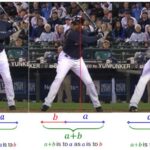
Ken Griffey jr., The Golden Ratio and The Perfect Batting Stance
Baseball, at its core, is deeply rooted in biomechanics. Balance, force, and repeatability is critical for successful hitting. By analyzing the stance and swing of Ken Griffey Jr., a remarkable synchronicity emerges between his technique and the principles of the golden ratio, a mathematical constant prevalent in nature.
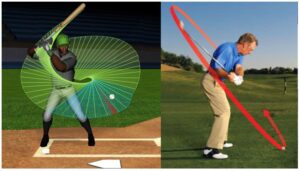
Micromanaging Metrics: A Comparative Study on Vertical Bat/Club Angle in Baseball and Golf Swings.
MLB methods, and by proxy, many coaches, micromanage through metrics interpretations, leading them to believe they can create controlled swing patterns from them, with a particular emphasis on the correlation between vertical bat angle, and batted ball launch angles.
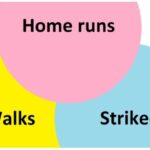
The Three True Outcomes Approach and the Complex Reality of Modern Baseball Strategy
In recent years, analytics have taken grip of batting strategy. Through this, the Three True Outcomes approach has emerged, emphasizing home runs and walks while marginalizing strikeouts. Yet, an in-depth exploration of statistical trends spanning two distinct eras prompts a reconsideration of the assumed dominance of this strategy.
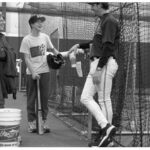
The Inherent Logic of Motor Learning
Motor learning is a biological marvel. Though coaching methods vary, one constant remains—the brain’s innate ability to create logical motor plans. By examining observations from toddlers learning basic skills to athletes mastering their craft, we gain insight into the fundamental principles that drive motor learning.
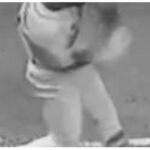
Is A Biomechanics Certification All It's Cracked Up To Be?
This is a Twitter post from On Base U, an organization that certifies coaches in biomechanics for batting and pitching. It shouldn’t be surprising that experts in golf would apply their understanding of swing mechanics to baseball batting incorrectly. After all, we are all limited to asking and answering the questions given our experience in a particular field.
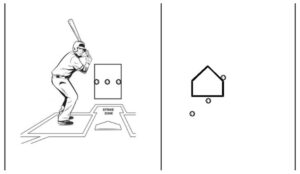
Neutralizing Effective Velocity in Baseball Batting
Have you heard of Effective velocity (Ev)? The Effective velocity theory by Perry Husband contends the same velocity pitch can appear to be faster or slower based on the location relative to the batter. A pitch thrown up-and-inside appears to be faster than the same velocity pitch located low-and-away.
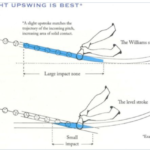
Baseball's Launch Angle Revolution
Have you ever wondered where the obsession with launch angles comes from? It’s one thing to say, “too many hitters today are swinging from their asses”. That’s an easy enough observation. The question that remains is, why?
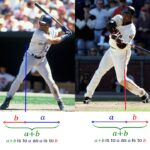
The Physics of Generating Power in a Baseball Swing
Pyramids have withstood the test of time due to their unique structure and weight distribution. The same principles of weight distribution and stable connection to the ground are crucial in generating power in human movement, particularly in a bat swing.
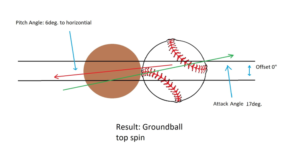
The Sweet Spot: Balancing Power and Consistency in Baseball Swings
This paper is a follow-up to my previous work comparing downward and upward swing paths and their effects on optimal launch angles for maximum flight distances of batted balls.
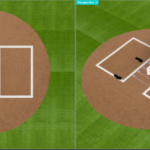
Swing Decisions and Contact points
This article is a transcript of my video discussing timing, contact points, and contact &timing adjustments.
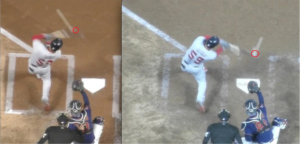
Spatial Memory and Bat Orientation: Synaptic Connections for Intertwined Memories
The creation of a memory that links spatial information with the orientation of the hands and the bat is a critical aspect of successful hitting in baseball.
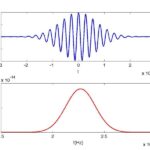
Is Cue-Based Errorless Training Simply Producing a Pavlovian Reflexive Response? No.
Concerning cue-based learning versus natural decision-making or real-world decision-making, in the context of cue-based or errorless learning, prompts or cues are utilized to guide decisions, leading to specific actions or responses.
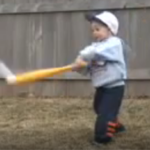
The Role of Subconscious Motor Solutions in Hitting a Baseball
Hitting a baseball is a challenging task that requires accurate timing and precise movements. However, it is interesting to note that young children, particularly toddlers, are able to swing and hit balls with perfect angles without being taught.
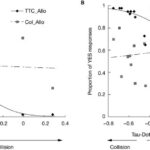
Baseball Swing Accuracy: Tau, Tau-Dot and Online Control Explained
The ability to accurately intercept or avoid moving objects is essential to many human activities, from stopping a car in time to avoid a collision to hitting a baseball. The brain uses a complex set of calculations, including tau and tau-dot, to predict the time to contact and adjust movements accordingly.

Velocity Perception and Prediction Systems
I’ve written quite a bit about the processes of visual perception and the role tau & tau-dot play in our prediction of ball arrival time and location. Here, I will discuss the interplay of other senses and how they help us provide informed decisions when hitting baseballs.
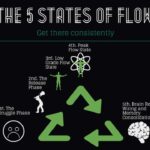
Unlocking Peak Performance: Cue-Based Training and the Path to Flow State
In this article, the captivating world of flow state and its profound impact on athletic performance is explored. While cue-based training is a focus of the discussion, it’s important to note that achieving flow state is not limited to a single method.
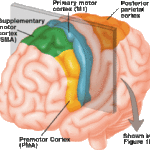
The Mental Side of Performance Outcomes
While researching visual and motor memory, I came across the work of a pair of neuroscientists who worked with a Major League baseball team,
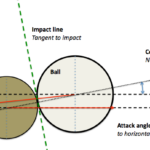
In Pursuit of the Optimal Swing
I will begin this study and discussion by stating, I absolutely agree with Professor Nathan’s conclusions for optimal attack angle for optimal launch angle to achieve
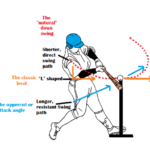
Explaining Professor Alan Nathan’s Optimal Attack...
Had Professor Nathan called his swing theory something other than the “optimal” attack angle, and had he not chosen a pitch over the middle of the plate hit to centerfield
